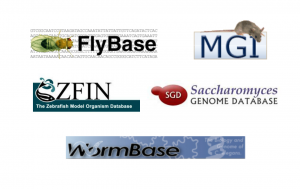Enter your address to receive notifications about new posts to your email.
Articles tagged Data & Databases
(16 results)
-
Snorkeling out of the membrane
One of the last places you’d expect to find a charged amino acid residue is buried within the hydrophobic interior of a lipid bilayer. And for the most part, this expectation holds true: portions of proteins that span membranes are typically composed of hydrophobic residues. But in some cases, the positively charged residues lysine and…
-
Start with the parts list: Introducing standardized reagent tables
Transparent research starts with an unambiguous parts list. To help promote the wider use of identifiers and recognized symbols in biological research, FlyBase (with input from other model organism databases) is developing a resource for tracking and reporting reagents in a more standardized way, aiding curation into research databases. The GSA journals are now encouraging…
-
Rapid immune evolution: exception or rule?
The arms race between pathogens and their hosts leaves clear genetic marks: the most quickly evolving parts of host genomes often include immune genes. But are these fast-movers the exception among immune genes, or do most genes in this class bear the genetic signature of strong selection? In the January issue of GENETICS, Early et…
-
Enhancer-promoter distance is a potent modulator of gene expression
To boost transcription of a target gene, enhancer sequences must make contact with the gene’s promoter. This crucial meeting is mediated by interacting proteins and the formation of chromatin loops that bring distant enhancers and promoters together. Although it’s clear that enhancers increase transcription this way, the primary mechanisms by which an enhancer’s target genes…
-
An uncertain future for biological databases
An article in the most recent issue of Science highlights a growing concern about the continued support of the biological databases on which our community depends. Indeed, 2015 GSA President Jasper Rine was quoted as saying these resources are “critical for our daily life as geneticists and biomedical researchers.” Many of the model organism databases (MODs) used…


![By National Park Service [Public domain], via Wikimedia Commons.](https://s43361.pcdn.co/wp-content/uploads/2017/03/biscayne_np_snorkeling-1-300x214.jpg)


![By Kelvinsong (Own work) [CC BY 3.0], via Wikimedia Commons. (Modified)](https://s43361.pcdn.co/wp-content/uploads/2017/01/rsz_transcription_factors-300x163.png)
